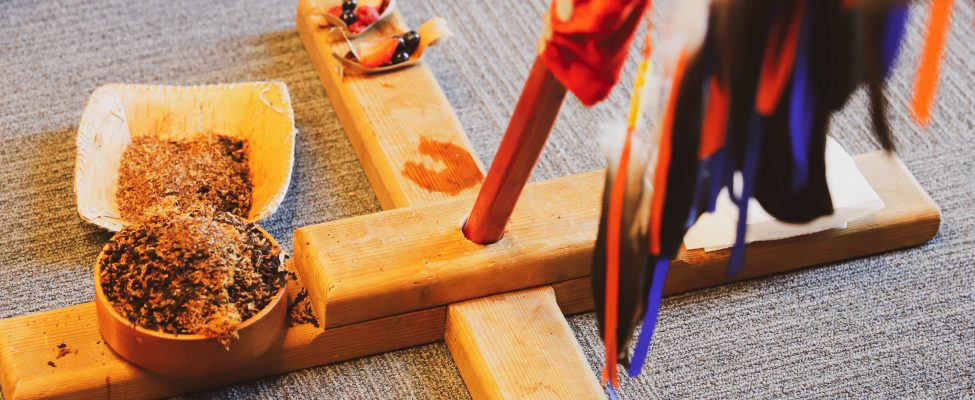The use of tobacco and its connection to ceremonial protocol is foundational to Anishinaabe history and culture and is used for several reasons. Miigwech to Robert Horton, Anishinaabemowin Educator and Cultural Facilitator at SGEI for sharing this knowledge.
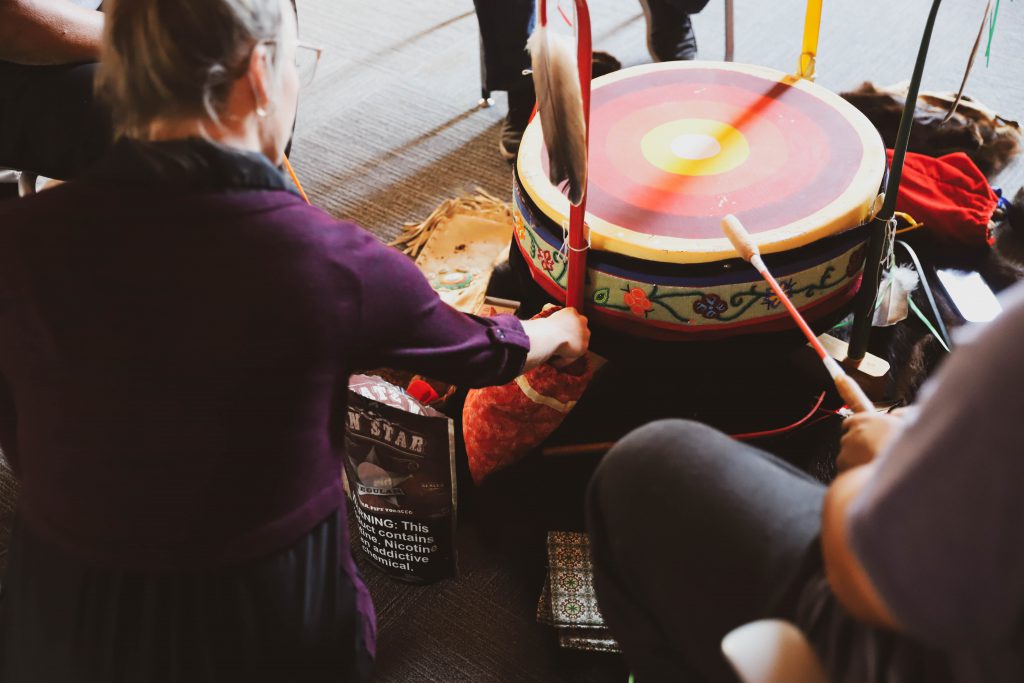
Translation, Linguistics and Phonetics
The Anishinaabe word that approximates “tobacco” is “asemaa.” It is pronounced “uh-SAY-maah.” We use the word “approximates” because it has more to do with the action of what is happening, as opposed to the crushed leaves themselves. The word can be broken down into smaller parts for a more detailed linguistic understanding:
- “Ase” describes the placement of energy or “he/she is placed.”
- “Maa” is a derivative of “Omaa,” meaning “here.”
Tobacco in Ceremony
It is protocol that before any ceremony takes place, the lessons of a very sacred song and ethic are followed, “Niigaanii asemaa” which means, “Asemaa leads/goes first.” Everything else follows.
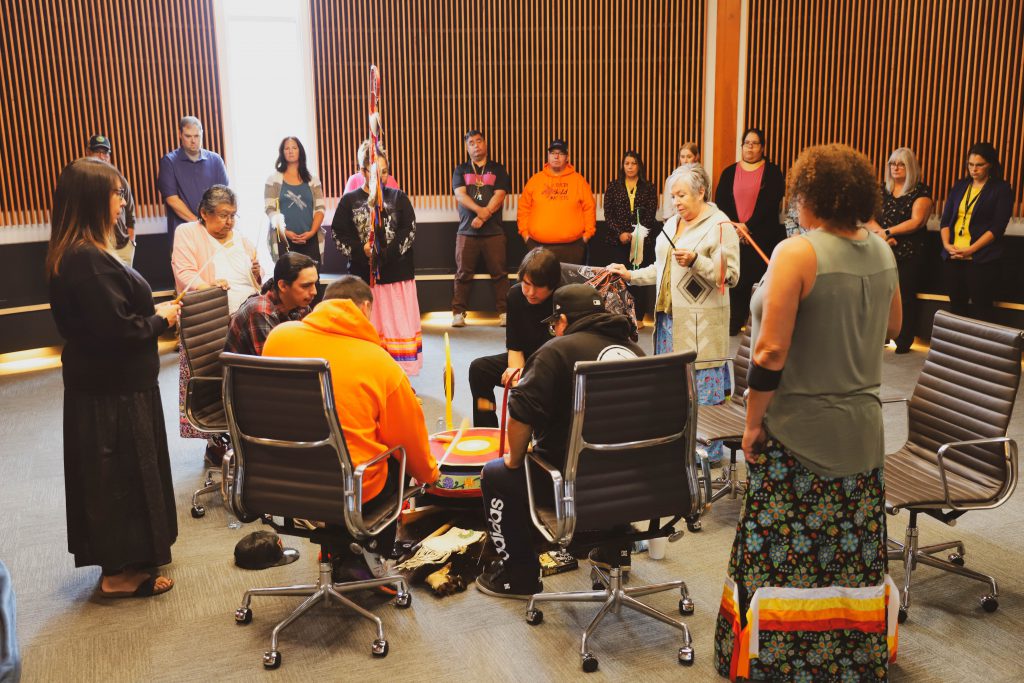
During ceremony, asemaa is always a central feature in protocol. Depending on the ceremony taking place, asemaa will be used in different ways:
- It may be given to all in attendance.
- It may be put within a pipe or pipes present.
- It may be placed into a sacred fire if one has been built.
- it may be expected to be placed near the door of a lodge or in particular places.
- It may be passed to the individual conducting ceremony for a certain purpose.
It is important to remember that depending on the type of ceremony taking place and the individual conducting the ceremony, the use of asemaa may be used differently – but people will typically be instructed how to use it and why.
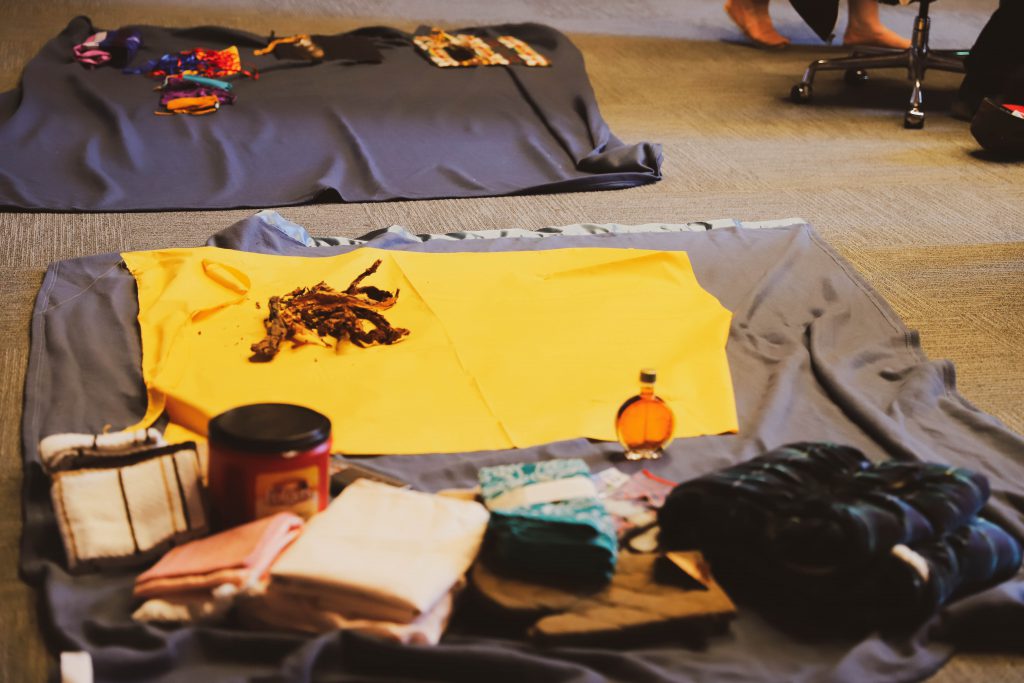
Why we use Tobacco in Anishinaabe Culture
Asemaa, or tobacco, is used in Anishinaabe culture to communicate with the spirit world, strengthen relationships, show respect, and provide an offering. It is respectfully used for:
Communication: Utilizing tobacco as an offering in specific ways serves as an intermediary between this side of existence and the unseen spirit world. The act of offering asemaa is seen as a sincere and sacred way of communicating with the spirit realm. As one holds this dried plant in their hand, it absorbs the energy, intention, thoughts, emotions, and expressions of one’s words. These things are “placed” within this medicine. It is then placed in a location where that energy is transferred to our wider universe; this is called a tobacco offering. On the land, at the base of trees, upon moss in muskeg areas, in fires, and in the water are a few places where asemaa can be placed. Here are some other ways in which asemaa is offered:
- It may be placed within certain types of tobacco ties attached to cedar boughs to protect a home or workplace.
- It may be placed below a spirit dish that has been offered to the land.
- It may be placed below a cloth offering at the base of a tree.
- During drum feasting it is passed to all in attendance and placed amongst designated areas.
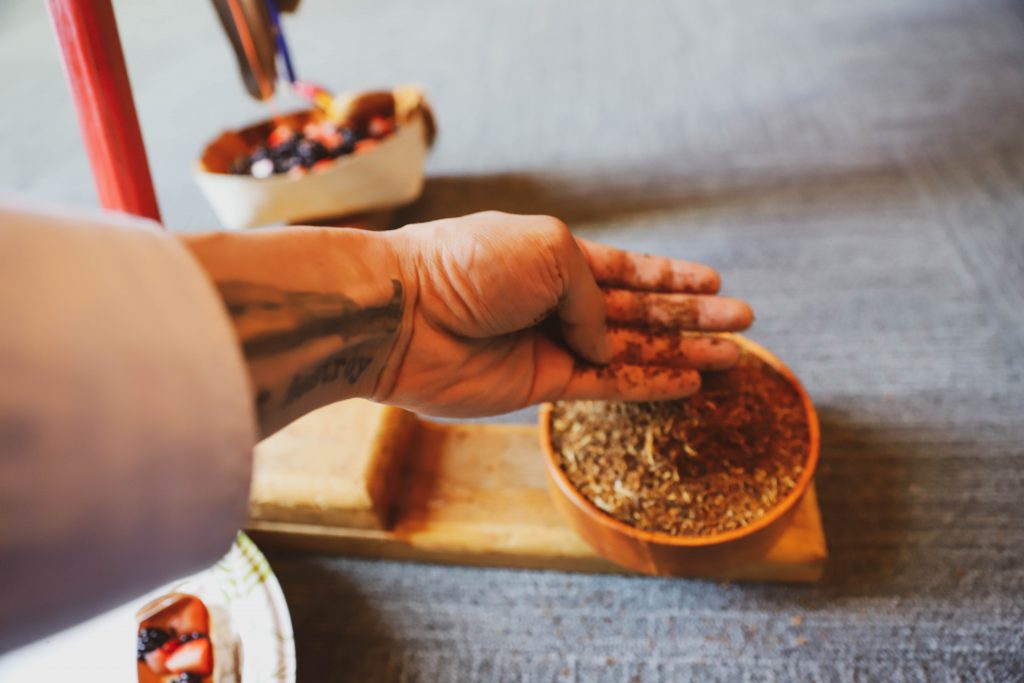
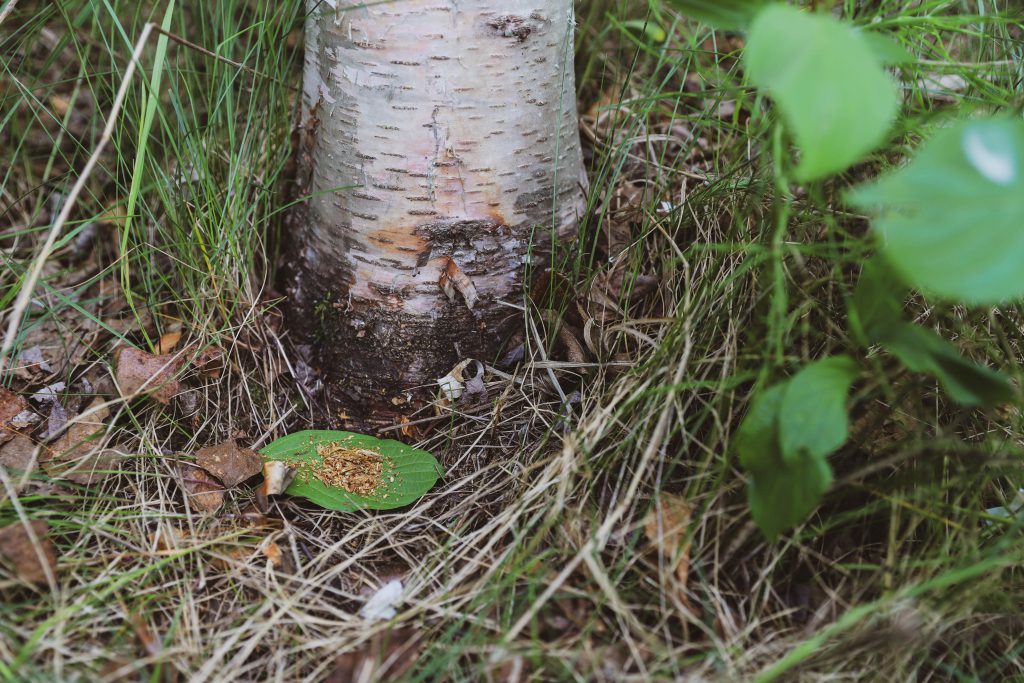
It is important to note that the specific practices related to the use of asemaa can vary among different Anishinaabe communities and individuals. Understanding and respecting the cultural context surrounding these practices is crucial.
Relationships: Whether it is requesting knowledge, furthering understandings from another or providing the base of a plant with tobacco before harvesting parts of it for medicines (and more), it is important to give before anything is taken. Not only does this ensure a dimension of respect, but it also creates an ongoing, reciprocal relationship between humans and other forms of life.
Respect: Asemaa can be offered outdoors to express appreciation for another day, provided as a sign of care to one’s helpers, used as an acknowledgement of those in the spiritual realm, given to another person out of respect, or placed beside sacred items. It is always given with a good heart.
Different Variations of Asemaa
There remains an older form of asemaa that predates the use of tobacco (before the transfer of tobacco from another Indigenous nation to the east of the Great Lakes). This is the inner, light green layer of inner bark found within red willow. Long ago (and still practiced today), the red outer layer was removed, and the inner bark was shaved away from the core. After drying, this plant was used exactly how tobacco is used today.
In some regions, substances such as dried bear-berry leaves or dried leaves connected to plum root have served the same purpose as tobacco and red willow.
It is important to understand that some commercial tobacco that is readily available may be a different species of plant all together from naturally grown tobacco. Naturally grown tobacco has been acknowledged as the most effective to use.
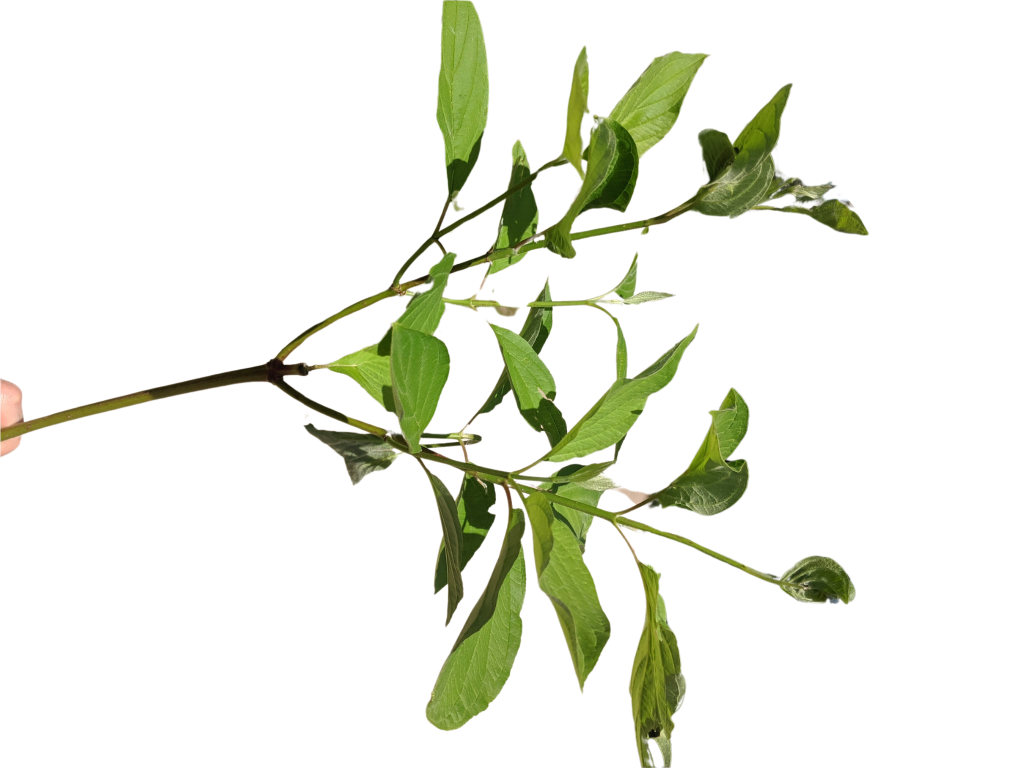
Engage in Culturally Enriched Education
Are you looking for ways to celebrate your Anishinaabe culture? SGEI offers a culturally supportive learning environment and opportunities for students to explore, learn more about and participate in Anishinaabe culture and practices while studying. Consider becoming an SGEI student today and learn more at www.7generations.org.

